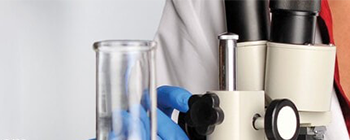Learn More
CD137 Ligand (4-1BB Ligand) Monoclonal Antibody (TKS-1), PerCP-eFluor™ 710, eBioscience™, Invitrogen™
Rat Monoclonal Antibody
Supplier: Invitrogen 46590180
Description
Description: The TKS-1 monoclonal antibody reacts with mouse 4-1BB Ligand (4-1BBL), a type II transmembrane protein and a member of the tumor necrosis factor superfamily. 4-1BBL is expressed by activated antigen presenting cells including B cells and macrophages. Interaction of 4-1BBL with 4-1BB (CDw137) is reported to deliver a costimulatory signal important in the T-APC interaction. Applications Reported: This TKS-1 antibody has been reported for use in flow cytometric analysis. Applications Tested: This TKS-1 antibody has been tested by flow cytometric analysis of stimulated mouse spleen cells. This can be used at less than or equal to 0.5 μg per test. A test is defined as the amount (μg) of antibody that will stain a cell sample in a final volume of 100 μL. Cell number should be determined empirically but can range from 10^5 to 10^8 cells/test. It is recommended that the antibody be carefully titrated for optimal performance in the assay of interest. PerCP-eFluor™ 710 emits at 710 nm and is excited with the blue laser (488 nm); it can be used in place of PerCP-Cyanine5.5. We recommend using a 710/50 bandpass filter, however, the 695/40 bandpass filter is an acceptable alternative. Please make sure that your instrument is capable of detecting this fluorochrome. Fixation: Samples can be stored in IC Fixation Buffer (cat. 00-8222) (100 μL cell sample + 100 μL IC Fixation Buffer) or 1-step Fix/Lyse Solution (cat.
00-5333) for up to 3 days in the dark at 4°C with minimal impact on brightness and FRET efficiency/compensation. Some generalizations regarding fluorophore performance after fixation can be made, but clone specific performance should be determined empirically. Excitation: 488 nm; Emission: 710 nm; Laser: Blue Laser. Filtration: 0.2 μm post-manufacturing filtered. The protein encoded by this gene is a member of the TNF-receptor superfamily. This receptor contributes to the clonal expansion, survival, and development of T cells. It can also induce proliferation in peripheral monocytes, enhance T cell apoptosis induced by TCR/CD3 triggered activation, and regulate CD28 co-stimulation to promote Th1 cell responses. The expression of this receptor is induced by lymphocyte activation. TRAF adaptor proteins have been shown to bind to this receptor and transduce the signals leading to activation of NF-kappaB.Specifications
| CD137 Ligand (4-1BB Ligand) | |
| Monoclonal | |
| 0.2 mg/mL | |
| PBS with 0.1% gelatin and 0.09% sodium azide; pH 7.2 | |
| P41274 | |
| Tnfsf9 | |
| Affinity chromatography | |
| RUO | |
| 21950 | |
| 4° C, store in dark, DO NOT FREEZE! | |
| Liquid |
| Flow Cytometry | |
| TKS-1 | |
| PerCP-eFluor 710 | |
| Tnfsf9 | |
| TNFSF9, CDw137L, CD137L, 4-1BBL, 41BBL | |
| Rat | |
| 25 μg | |
| Primary | |
| Mouse | |
| Antibody | |
| IgG2a κ |
For Research Use Only.



